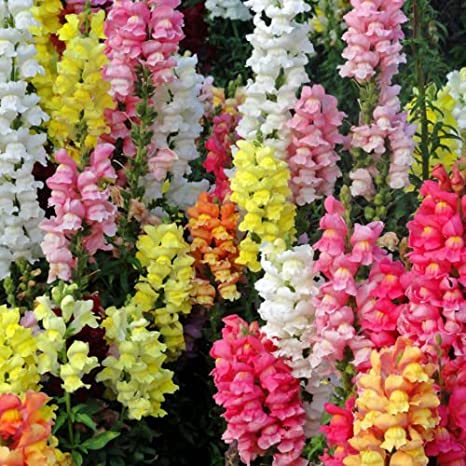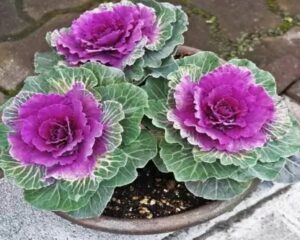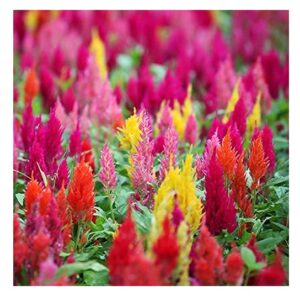
If you’re looking to add a splash of color and charm to your garden, antirrhinum flowers, commonly known as snapdragons, can be an excellent choice. With their vibrant hues and unique shape, these flowers can brighten up any landscape. However, like any plant, they require proper care and attention to thrive. In this guide, we’ll walk you through everything you need to know to successfully grow antirrhinum flower seeds and enjoy a stunning display of blooms in your garden.
Table of Contents
ToggleUnderstanding Antirrhinum Flowers
Before diving into the specifics of growing antirrhinum flower seeds, let’s take a moment to understand these beautiful plants. Antirrhinum flowers belong to the genus Antirrhinum and are native to rocky areas of Europe, North America, and North Africa. They are characterized by their distinctive “snapdragon” shape, which resembles a dragon’s mouth opening and closing when gently squeezed.

Choosing the Right Seeds
When it comes to growing antirrhinum flowers, selecting the right seeds is crucial. Look for high-quality seeds from reputable suppliers to ensure the best possible results. Opt for a variety of colors to add visual interest to your garden, or choose a single color for a more uniform look. Additionally, consider factors such as bloom time and height when selecting your seeds to create a well-balanced garden.
Preparing the Soil
Once you’ve chosen your seeds, it’s time to prepare the soil for planting. Antirrhinum flowers prefer well-drained soil with a slightly acidic to neutral pH level. Before planting, amend the soil with organic matter such as compost to improve its texture and fertility. Remove any weeds or debris from the planting area to give your seeds the best possible start.

Planting Antirrhinum Seeds
Planting antirrhinum seeds is relatively straightforward but requires attention to detail. Start by sowing the seeds indoors in early spring, approximately 6-8 weeks before the last frost date in your area. Fill seed trays or small pots with moistened seed starting mix, then press the seeds lightly into the soil. Cover the seeds with a thin layer of soil and gently water them in.
Providing Proper Care
Once your antirrhinum seeds have been planted, it’s essential to provide them with proper care to ensure healthy growth. Place the seed trays in a warm, sunny location, and keep the soil consistently moist but not waterlogged. As the seedlings emerge, thin them out to prevent overcrowding and promote airflow. Fertilize the seedlings with a balanced fertilizer once they have developed their first true leaves.
Transplanting Seedlings
When the danger of frost has passed and the seedlings have grown to a manageable size, it’s time to transplant them into the garden. Choose a sunny location with well-drained soil, and space the seedlings according to the recommendations on the seed packet. Gently remove the seedlings from their containers, taking care not to damage the delicate roots, and plant them at the same depth as they were growing in their containers.
Watering and Mulching
After transplanting, water the seedlings thoroughly to help them establish roots in their new home. Once established, water your antirrhinum plants regularly, especially during dry spells, but avoid overwatering, as this can lead to root rot. Apply a layer of mulch around the base of the plants to help retain moisture, suppress weeds, and regulate soil temperature.
Supporting Tall Varieties
Some varieties of antirrhinum flowers can grow quite tall and may require support to prevent them from flopping over. Install stakes or a trellis near the plants and gently tie the stems to the support structure as they grow. This will help keep the plants upright and prevent damage to the delicate stems and flowers.
Deadheading and Pruning
To encourage continuous blooming and maintain the appearance of your antirrhinum plants, it’s essential to deadhead spent flowers regularly. Simply pinch off the faded blooms as soon as they begin to wither, taking care not to damage the surrounding foliage. Additionally, prune back any leggy or overcrowded growth to promote bushier, more compact plants.
Dealing with Pests and Diseases
While antirrhinum flowers are relatively pest and disease-resistant, they can occasionally fall victim to common garden pests such as aphids, spider mites, and thrips. Keep an eye out for any signs of infestation, such as distorted foliage or sticky residue, and take appropriate measures to control the pests. In severe cases, you may need to use insecticidal soap or neem oil to eliminate the pests effectively.
Conclusion
Growing antirrhinum flower seeds can be a rewarding experience that yields beautiful blooms and adds charm to your garden. By following the steps outlined in this guide and providing your plants with the care they need, you can enjoy a stunning display of snapdragons from spring through fall. Whether you’re a seasoned gardener or a novice enthusiast, growing antirrhinum flowers is sure to bring joy and beauty to your outdoor space.
Hudgle Premium Flower Antirrhinum Seeds | Sow and Grow Fresh Healthy Seed in Your Garden Perfect for Home & Terrace Gardening High Germination Seeds 200 Seeds Pack
About this item
- Growing Antirrhinum Flower Flower In The Garden
- Premium Flower Antirrhinum Flower Mixed Seeds (Open pollinated) | Sow and Grow Fresh Healthy Seed in Your Garden Perfect for Home & Terrace Gardening
- 50 Seeds In Pack
Read More.. How to Successfully Grow Zinnia Flower Seeds 2024



